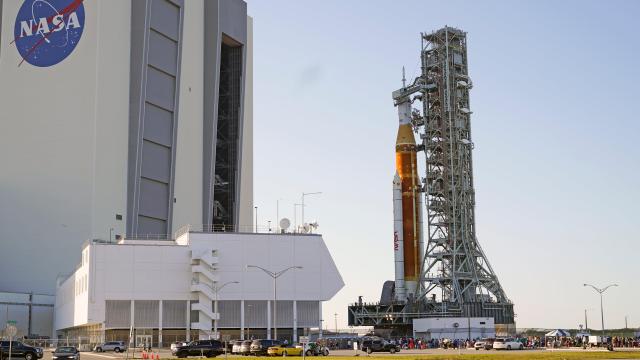NASA’s megarocket designed to carry humans to the Moon has reached historic Launch Pad 39B at Kennedy Space Centre in Florida. Standing 98.15 m tall, the Space Launch System is an impressive sight — one we’ve waited ages to finally see — as these striking photos attest.
Space Launch System, NASA’s biggest-ever rocket, began its crawl from the Vehicle Assembly Building to the launch pad yesterday. This is the critical centrepiece of NASA’s Artemis program, which seeks to land the first woman and first person of colour on the lunar surface later this decade. The uncrewed inaugural mission, Artemis 1, is set to launch this spring or summer.
The rollout begins
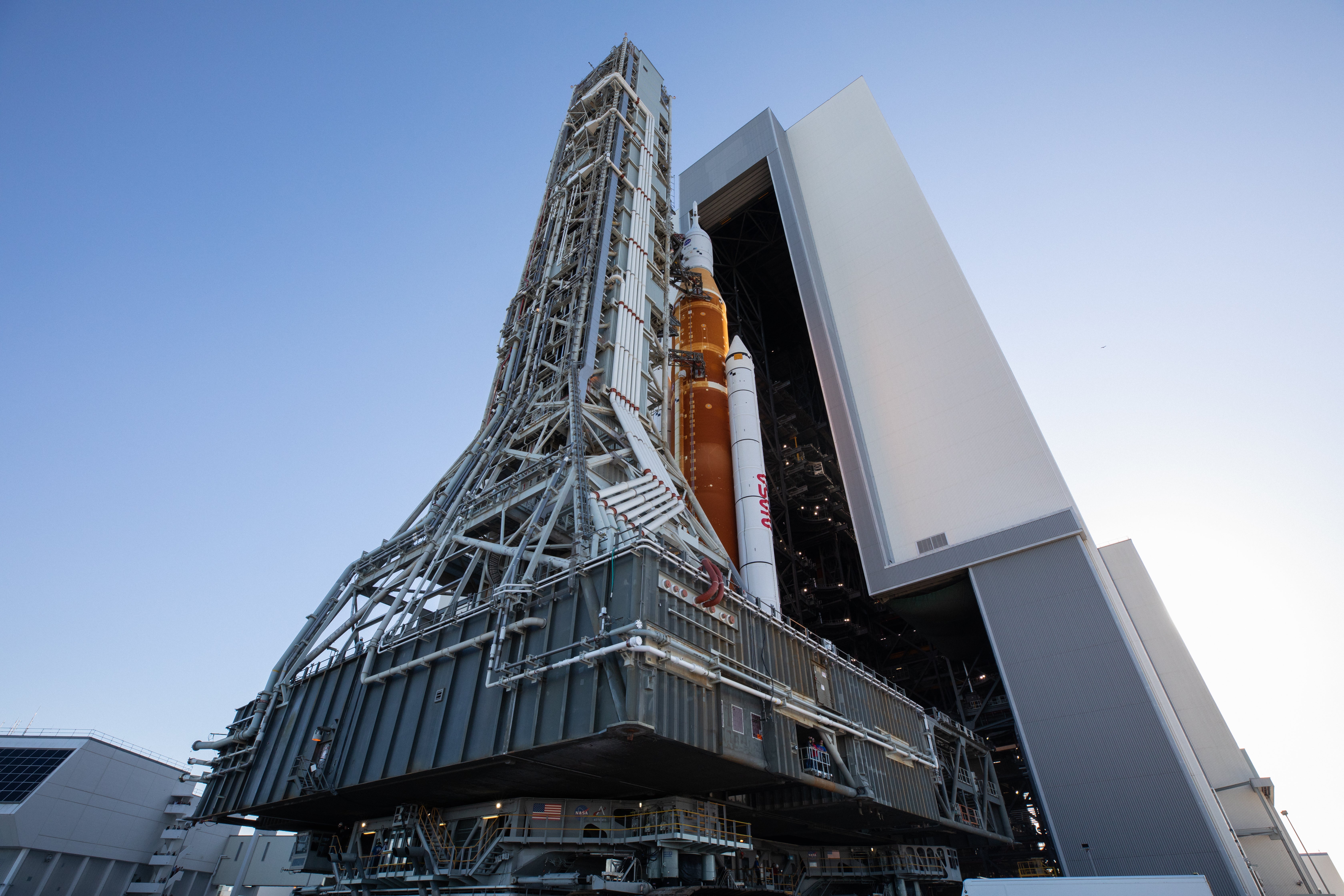
The rollout began at 8:47 a.m. AEDT on March 18 and ended at 7:15 p.m. AEDT on March 18. The slow-motion journey to Launch Pad 39B took 10 hours and 28 minutes.
An ‘iconic moment’

Said Tom Whitmeyer, deputy associate administrator for Common Exploration Systems Development at NASA: “Rolling out of the Vehicle Assembly Building is an iconic moment for this rocket and spacecraft, and this is a key milestone for NASA,” as he stated in a press release.
SLS on the move
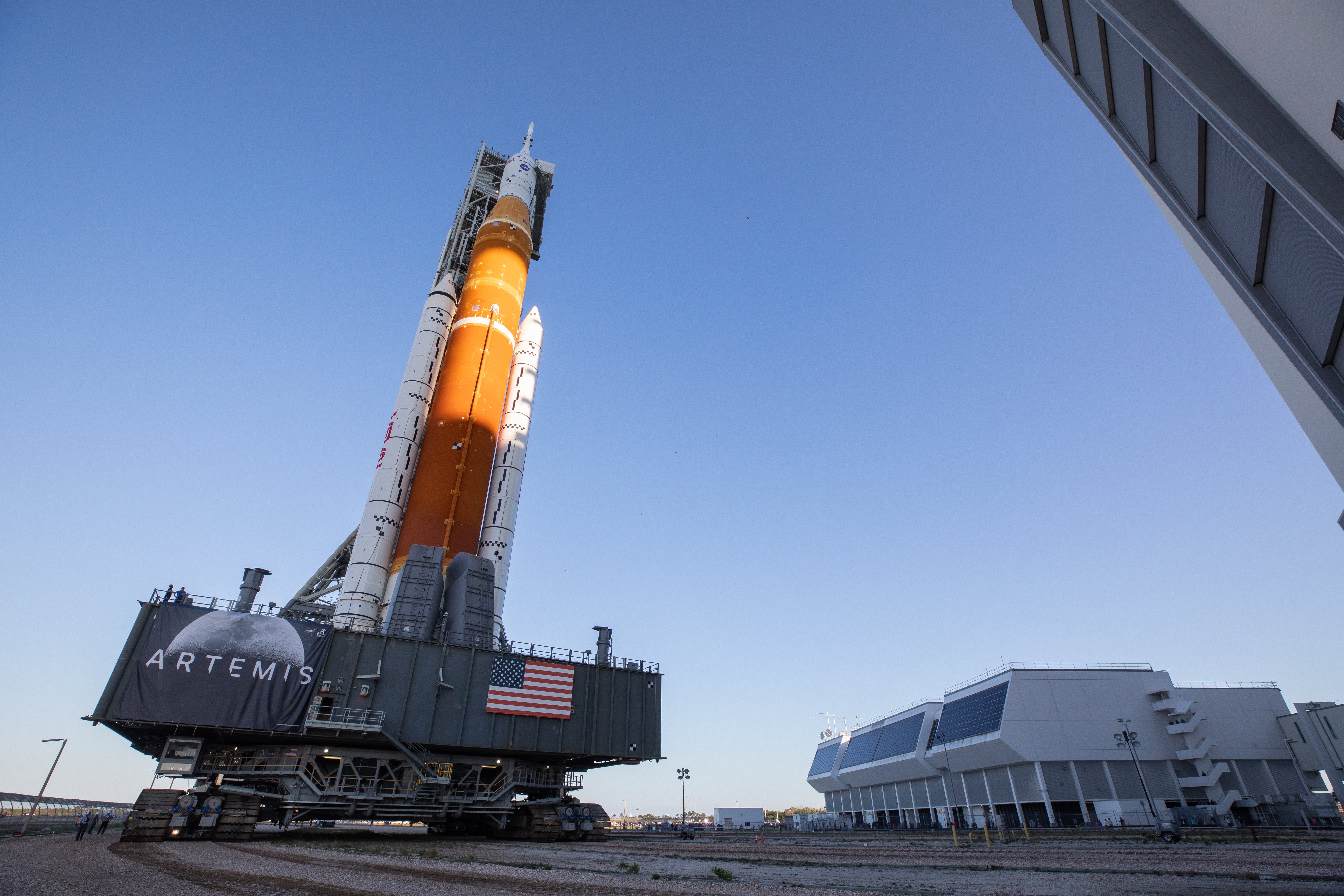
NASA’s Crawler-Transporter 2 (CT-2) did the heavy lifting of the heavy-lift rocket, travelling 6 km to the launch pad. The crawler moves at less than a mile per hour and has a loading capacity of 18 million pounds.
Crawler crawling
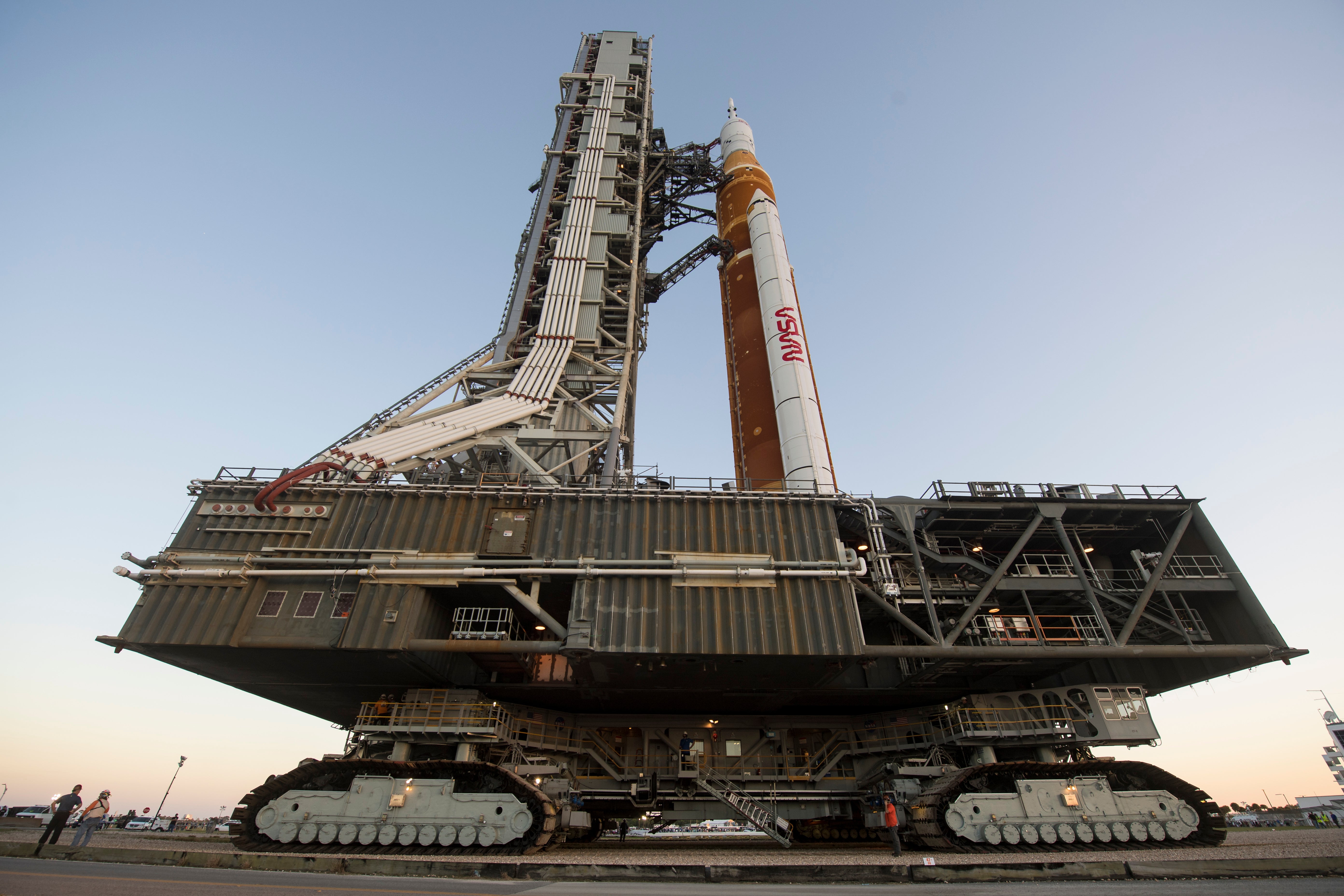
Crawler-transporter 2 is more than 50 years old, but it’s been modified for the Artemis program and will be used for many years to come.
Slow and steady wins the race

SLS headed to the launch pad in anticipation of the wet dress rehearsal, currently scheduled for April 3. After the system is loaded with propellant, mission controllers will perform a full countdown but will stop short of actually launching the rocket. SLS will then be drained of its propellant and brought back to the Vehicle Assembly Building for final checkouts.
In the spotlight
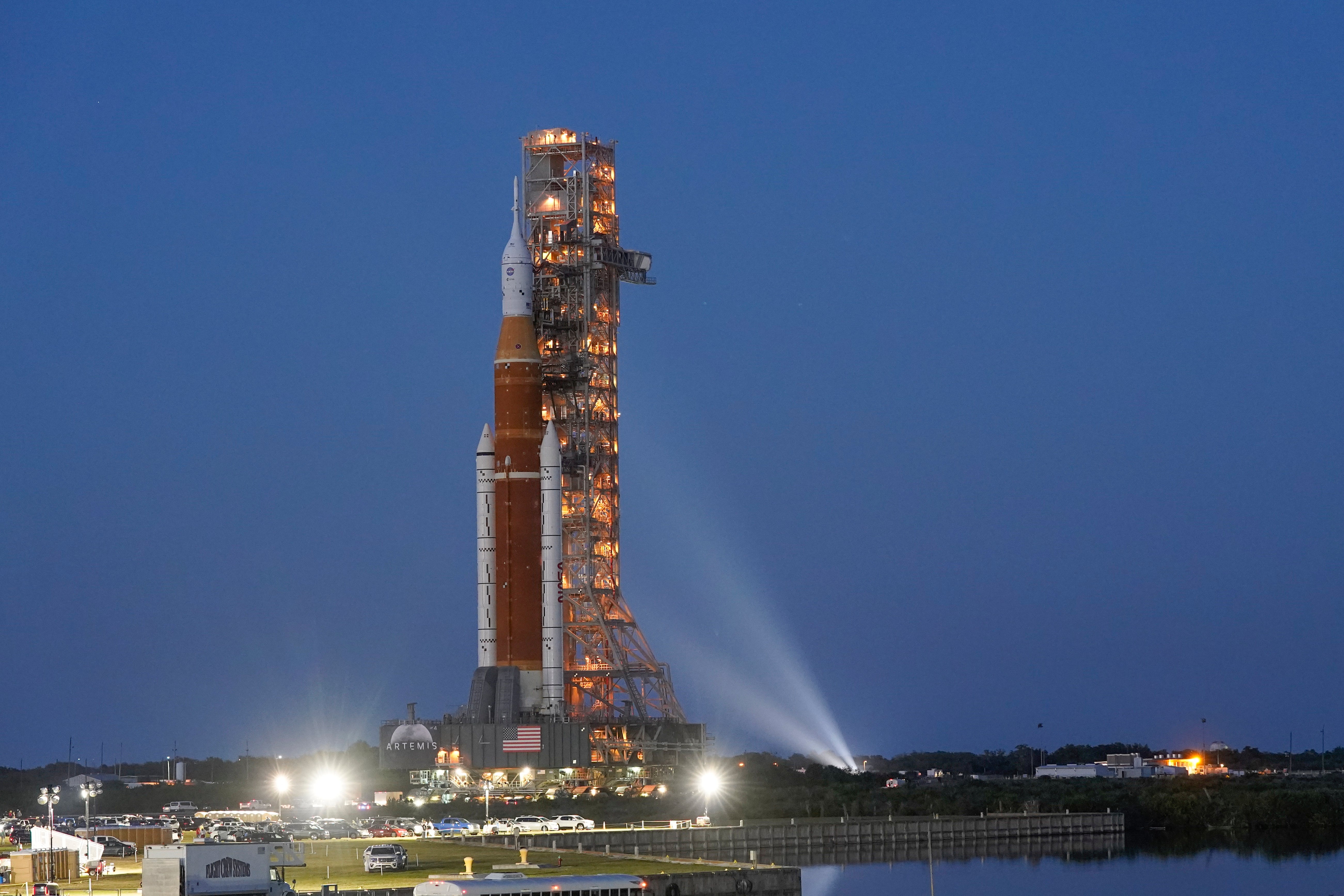
A successful wet dress rehearsal will set the stage for the inaugural launch of SLS, known as the Artemis 1 mission. No date has been set for this historic launch, but NASA will have a better idea as to the timing after evaluating data from the upcoming rehearsal. The space agency has targeted May, but a launch this coming summer seems more likely.
A trip to the Moon
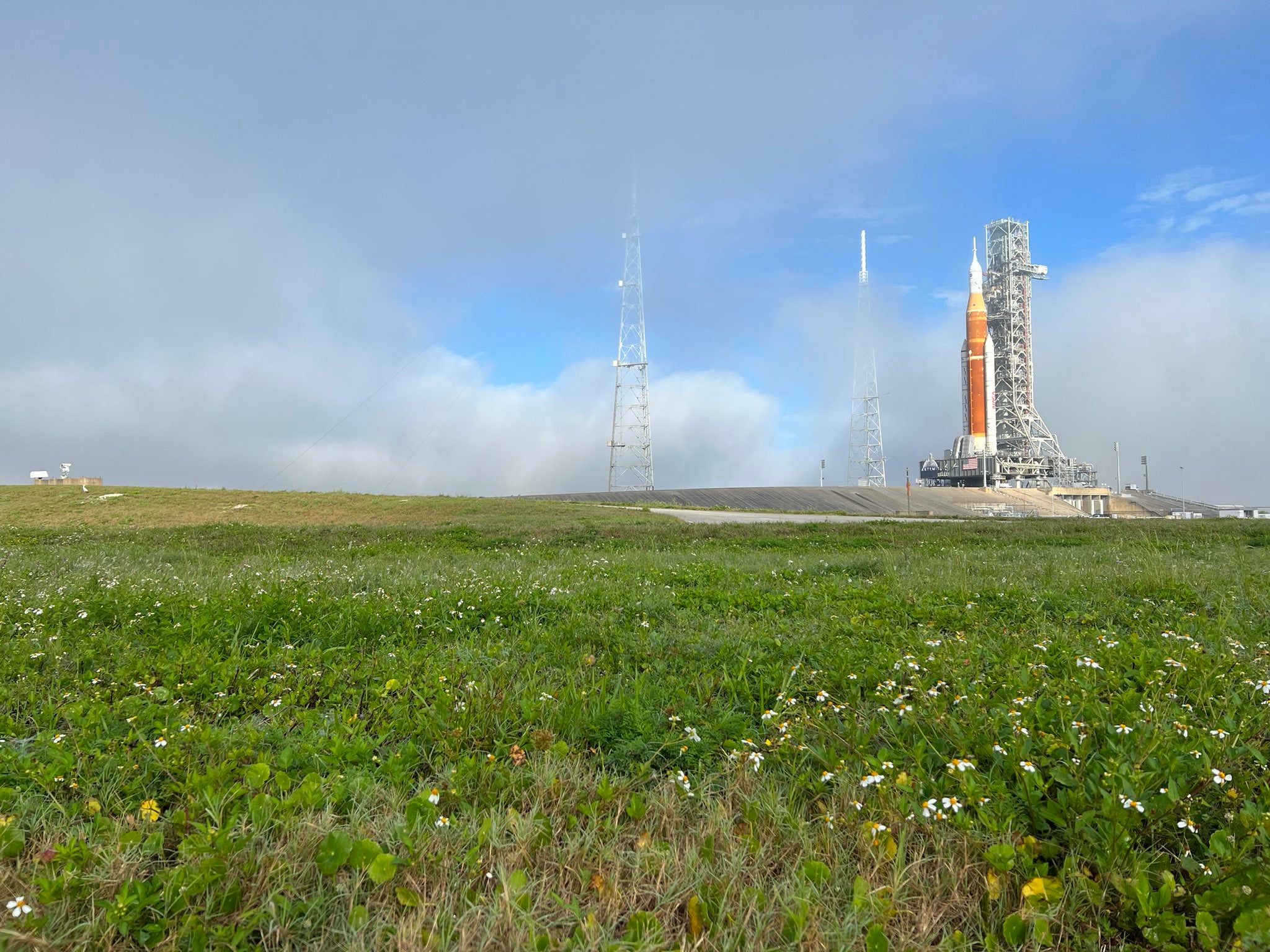
For Artemis 1, SLS will launch the Orion capsule to the Moon on a 25-day mission. The uncrewed spacecraft will spend six days in a retrograde lunar orbit and then return to Earth. Artemis 2 will see astronauts make the same journey, and Artemis 3 aims to actually land them on the lunar surface.
A ‘new era of exploration’

“From this sacred and historical place, humanity will soon embark on a new era of exploration,” NASA administrator Bill Nelson said. “Artemis I will demonstrate NASA’s commitment and capacity to extend humanity’s presence on the Moon — and beyond.”
